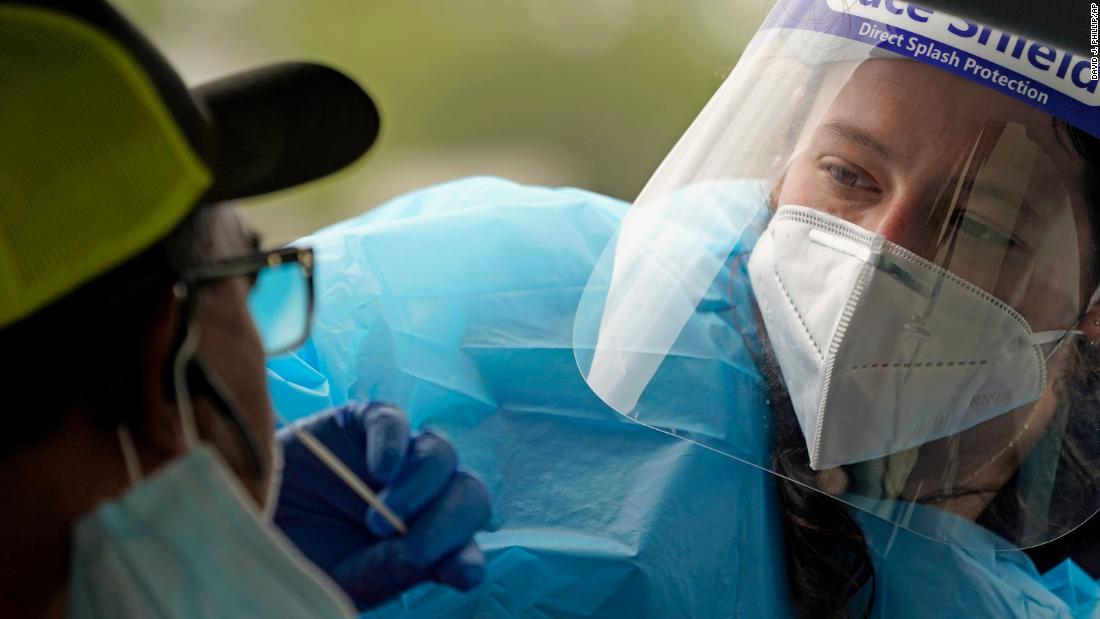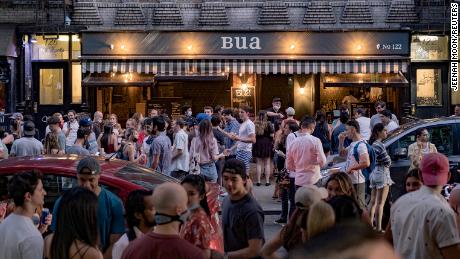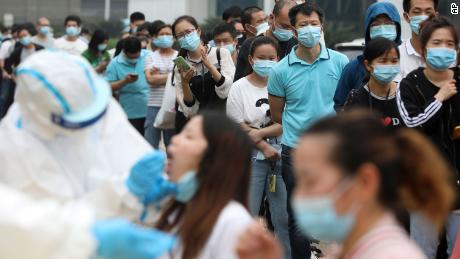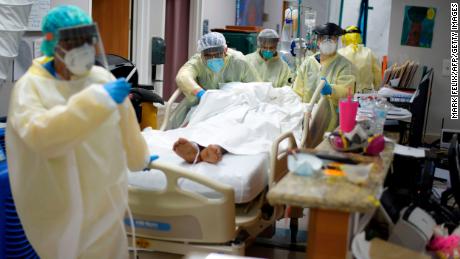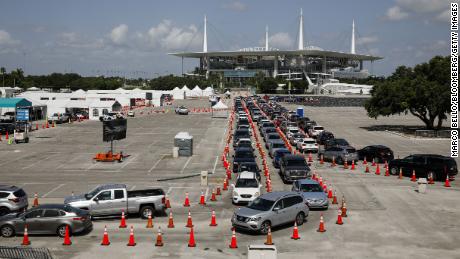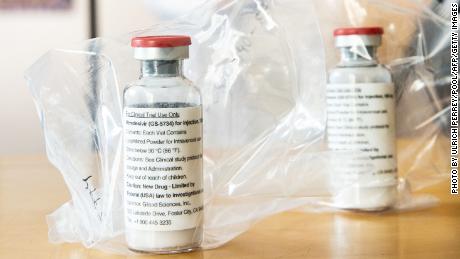Thirty-two states are struggling with higher infection rates as some hospitals are close to running out of beds
“We are in free fall,” said Dr. Rochelle Walensky, chief of infectious diseases at Massachusetts General Hospital.
“You see the footage of what happened this past weekend. And people are either naive to the influence of their actions, or they’re simply resigned to ignore it.”
“We know of the 50,000 cases this past day — a single day of this (holiday) weekend,” Walensky said. “If they’re young people, it could be 500 people who die from that. If they’re older people, it could be 7,500 people who die from that — just from a single day of infection.”
But “even if a person does not get harmed individually, they have the potential to infect two to three other people who will be harmed by this infection. So there’s a lot of harm that could be done.”
“Let’s remember there are 300 million people in this country who remain susceptible and have been uninfected so far, and this virus is far from running out of people to infect,” Walensky said.
“And until we change our behavior to prevent these infections, the infections are going to continue to soar.”
In 32 states, the rates of infection are still going up
With spikes in new cases, doctors are worried about more hospitalizations and deaths in the coming weeks.
“We’re accelerating nationally. … The number of cases still continues to accelerate,” said Dr. Peter Hotez, dean of the National School of Tropical Medicine at the Baylor College of Medicine in Houston.
“We’re breaking records almost every day here in the state of Texas. People are piling into hospitals, into ICUs (intensive care units). We can’t really keep going at this rate,” he said.
“And it’s not only happening in Texas, of course. It’s happening in Florida, Arizona. We’re starting to see now a similar situation unfold on the Gulf Coast. And now we’re starting to see this in the Upper Midwest and in Tennessee as well.”
Like Walensky, Hotez described the spiraling situation as a “free fall.”
At least 32 states are reporting higher rates of new cases this week compared to last week, according to Johns Hopkins University data: Alabama, Alaska, Arizona, California, Delaware, Florida, Georgia, Hawaii, Idaho, Illinois, Indiana, Iowa, Kansas, Louisiana, Maryland, Michigan, Missouri, Montana, Nevada, New Mexico, North Carolina, North Dakota, Ohio, Oklahoma, Oregon, Pennsylvania, South Carolina, Tennessee, Texas, Washington, West Virginia and Wisconsin.
In 14 states, the rates of new infections are generally holding steady: Arkansas, Colorado, Maine, Minnesota, Mississippi, Nebraska, New Jersey, New York, Rhode Island, South Dakota, Utah, Vermont, Virginia and Wyoming.
And only four states are seeing decreases in the rates of new cases: Connecticut, Kentucky, Massachusetts and New Hampshire.
Correcting the President’s claim
“That 99% harmless (claim) is ridiculous,” Hotez said.
“We know 15% to 20% of patients are hospitalized, and of those, about half go in intensive care with permanent injury,” he said.
“That was just an irresponsible statement.”
Some parts of the US opened ‘too early’
In Florida, officials shut multiple beaches throughout the state hoping to avoid July 4 crowds. The state reported 9,999 new coronavirus cases Sunday, bringing Florida’s total to more than 200,000 infections.
Texas reported its second highest day of new cases over the weekend. The state opened “too early, too much,” driving Houston hospitals to surge capacity in recent days, said Harris County government head Lina Hidalgo.
“Wishful thinking is neither good economic policy, nor good public health policy,” Hidalgo told ABC’s “This Week” on Sunday.
“If we had stayed shut down for longer and opened more slowly, we would probably be in a more sustainable place in our economy.”
In Arizona, Phoenix Mayor Kate Gallego told ABC’s “This Week” that her state “opened way too early,” attributing much of the “explosion” in cases to people between the ages of 20 and 44.
Florida authorities failed to contact trace
CNN spoke with 27 Floridians — or their family members — who tested positive for the virus and only five said they received a call from health authorities asking for their contacts.
It’s unclear how many contract tracers are employed by the state. A spokesperson for the state’s health department told CNN there are 1,600 people “currently involved in contact tracing every positive case of COVID-19 in Florida” but another said there are 2,300 “individuals involved in contact tracing.”
According to the Florida Department of Health, when someone tests positive for Covid-19, the department “conducts an extensive epidemiological investigation in conjunction with the (Centers for Disease Control and Prevention) to identify individuals who may have had close contact with the virus.”
Remdesivir should be reserved for very sick patients, official says
Only one antiviral drug, remdesivir, has received emergency authorization from the Food and Drug Administration for use in treating coronavirus infections. Remdesivir has been shown to shorten recovery time for people who catch the virus.
The US government intends to “surge remdesivir to the areas that most need it,” FDA Commissioner Dr. Stephen M. Hahn said Sunday.
Hahn noted that the country’s remdesivir supply has not run out and is being distributed by the Department of Health and Human Services (HHS).
Last week, HHS announced that it had shipped the final allocation of the antiviral drug, prompting concerns there would not be enough to help states experiencing sharp rises in infections.
“The vice president and I and others were in Florida and this issue came up, and we are receiving that feedback and then shipping remdesivir,” Hahn said. “So it’s available for people who need it.”
The country currently has enough remdesivir if the pandemic doesn’t get any worse, former FDA commissioner Dr. Scott Gottlieb said Sunday on CBS’ “Face The Nation.”
For the supply to last, the drug should be reserved for very sick or hospitalized Covid-19 patients, Gottlieb said.
“But if the epidemic worsens and we want to extend use of the drug to patients who aren’t as ill but have preexisting conditions that predict that they may become very sick, we don’t have enough drug for that,” he said.
“We would have had to set the groundwork for that months ago, and we didn’t do that.”
CNN’s Elizabeth Cohen, Chuck Johnston, Wes Bruer and Dana Vigue contributed to this report.
![]()


